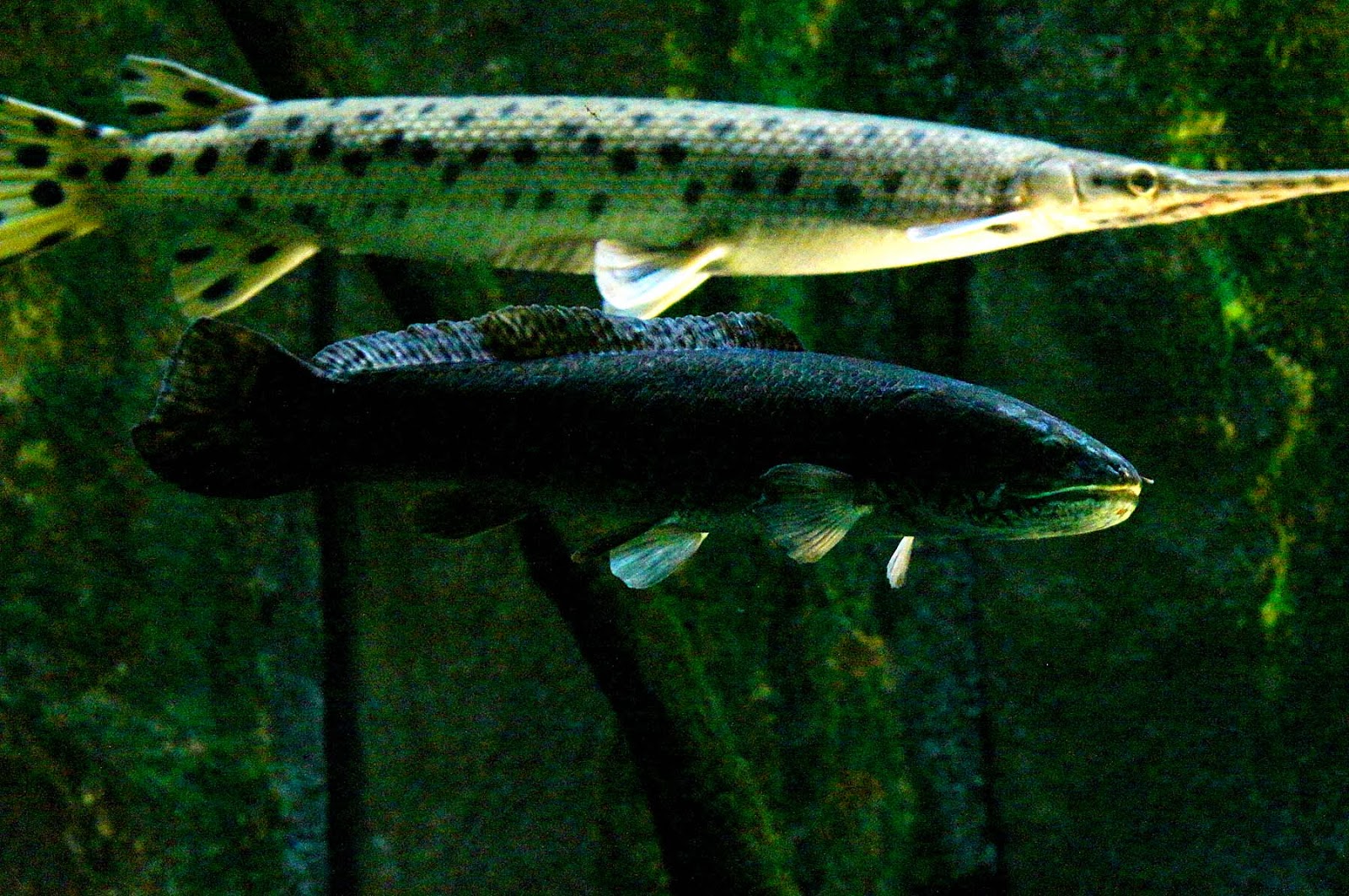In honor of next week's return to Arctic conditions:
.jpg) |
Kumlien's Gull (Larus glaucoides kumlieni),
North Point Marina, Lake Co, IL 2/16/2013 |
This is a Kumlien's Gull (
Larus glaucoides kumlieni).
 |
Thayer's Gull (Larus thayeri),
Waukegan Beach, Lake Co, IL 2/23/2014 |
This is a Thayer's Gull (
L thayeri). At least according to the AOU. According to the British, it's another Iceland Gull (
L glaucoides thayeri). And if we follow the precedent we see in other gulls, the first one isn't an Iceland Gull at all, it's a hybrid (
L. glaucoides X thayeri)!
It's all a bit of a mess, really. So shall we dive in?
The AOU considered Thayer's Gull to be a subspecies of Herring Gull until 1983, at which point it was split into a separate species. Kumlien's (now thought to be our subsp. of Iceland) was considered a distinct species until 1957, when it was lumped with Iceland. Today, Thayer's and Kumlien's are known to interbreed in parts of northern Canada.
(1) McGowan & Kitchener, reviewing historical records of the two, argued that Kumlien's is a hybrid swarm that originated when Thayer's expanded their range east into that of the nominate Iceland Gull (
L. g. glaucoides).
(2)
So what is the status of these forms? They all interbreed, apparently, which suggest that the British are right, and they're all the same species, right? Well, not necessarily. Hybrids between different species do occur, as this guy from last year's Gull Frolic demonstrates:
 |
Great Black-backed X Herring Gull (Larus marinus X argentatus smithsonianus)
North Point Marina, Lake Co, IL 2/16/2013 |
As far as we could tell, this is a Herring X Great-Black-backed hybrid. And some birds hybridize extensively without being lumped. Like this guy:
 |
Glaucous-winged Gull (Larus glaucescens),
Resurrection Bay, AK 8/5/2012 |
Meet Larus glaucescens, the Glaucous-winged Gull. These guys are famous for their, shall we say, indiscreet ways? They're best known for extensive hybridization with Western Gulls (
L. occidentalis) in Washington State, but they form mixed colonies of mostly hybrids with whatever large gulls they overlap with. For instance, this guy:
 |
Glaucous-winged X Herring Gull (Larus glaucescens X argentatus smithsonianus)
Potter Marsh, Anchorage, AK 8/3/2012 |
Photographed at Potter Marsh just south of Anchorage, this appears to be a Herring X Glaucous-winged hybrid, the most common large gull in and around Anchorage.
Despite all this, we still consider Glaucous-winged to be a good species, and indeed in areas away from the hybrid swarms they seem to fit the criteria.
What does this mean for Kumlien's Gull? If McGowan & Kitchener are right, then kumlieni resulted from the eastward movement of Thayer's displacing Iceland, with a fairly extensive hybrid zone forming in eastern Canada (although farther north, they failed to produce a hybrid zone, instead replacing Iceland completely). With Glaucous-winged, we don't consider a hybrid swarm to be a separate subspecies, and we clearly don't consider it evidence for sympatry (if we did that, we'd be left with about three species of large gull -- which is two more than some authors have called for!). So, should we Chicago birders keep looking for Iceland's, or should we prepare to give up our beloved Thayer's Gulls as Icelands? Or perhaps we'll start calling kumlieni a hybrid swarm, similar to the Olympic Gulls on the west coast -- if we follow the Glaucous-winged example that seems the sensible course.
Surprisingly, Gay, et al., in a phylogeny based on mtDNA, found that Thayer's clustered with Glaucous-winged, as part of a large Arctic clade that includes Iceland. In fact, they were unable to distinguish Thayer's from Glaucous-winged.
(3) On the other hand, they appear to have American Herring Gull as a sister species to California Gull, which suggests that mtDNA may not be the best method for determining phylogenies of lineages that hybridize this freely.
These large gulls can be maddening to the birding community. (Online discussions about odd or out-of-place gulls can drag on for years without a resolution. Check out Old One-Foot as an example, or last year's possible Slaty-backed Gull in Connecticut). For the biologist, they're a reminder that critter's don't have to follow the nice, neat scripts we write for them. They live their lives, it's up to us to write a story that fits.
(1) Gaston, A. J., & Decker, R. 1985. Interbreeding of Thayer’s Gull Larus thayeri and Kumlien’s Gull
Larus glaucoides kumlieni on Southampton Island, Northwest Territories. Can. Field. Nat. 99:
257-259.
(2) McGowan, R. Y., & Kitchener, A. C. (2001). Historical and taxonomic review of the Iceland Gull Larus glaucoides complex. British Birds, 94, 191-195.
(3) Gay, L., Bell, D. A., & Crochet, P. A. (2005). Additional data on mitochondrial DNA of North American large gull taxa. The Auk, 122(2), 684-688.



.jpg)



.jpg)
.jpg)







.jpg)
.jpg)







.jpg)
.jpg)






